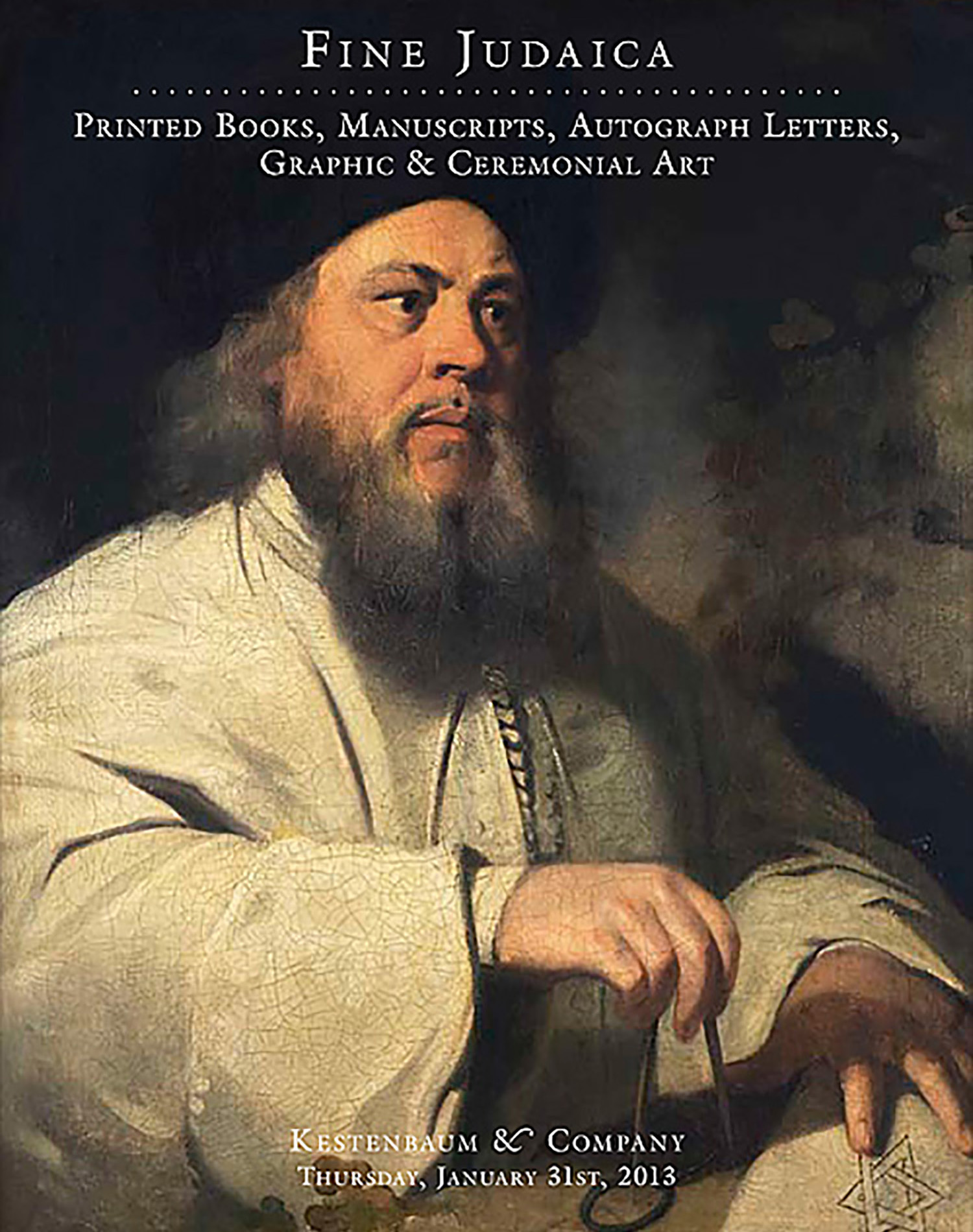(HOLOCAUST)

AUCTION 57 |
Thursday, January 31st,
2013 at 1:00
Fine Judaica: Printed Books, Manuscripts Autograph Letters, Graphic & Ceremonial Art
Lot 108
(HOLOCAUST)
v.p.: v.d
Est: $5,000 - $7,000
PRICE REALIZED $5,000
The tragic fate of German Jewry is reflected in this small, exceptionally scarce pamphlet.
In the early years of Nazi rule in Germany, the Gestapo would on occasion return to loved ones the cremated remains of family members who had been previously summarily arrested and then murdered in concentration camps. The Gestapo sardonically forced the bereaved families to pay the financial costs for the duration the murdered individual was “housed and fed” before death and only then would they return the body. (It was of course impossible to know whether the ashes were indeed those of the specific family member or not).
Throughout history, Orthodox Judaism has taken a very negative view of cremation and is loath to accord honors to the deceased should the remains have been cremated. This stance was by necessity challenged, due to the shocking circumstances surrounding the forced cremation of Jews by the Nazis.
In the present pamphlet Chief Rabbi Kirschbaum ruled that given the circumstances the German Burial Societies are to place the cremated remains into a coffin together with a talith and tachrichin (shrouds) as if the body were fully intact, in order to affirm the traditional Jewish belief in the Resurrection of the Dead. In paragraph 3, Kirschbaum invoked a letter by R. Markus Horovitz of Frankfurt (author Responsa Mateh Levi) “to our Kehillah,” dated 22nd June 1893, expressing leniency toward those willingly cremated. R. Kirschbaum reasoned therefore, that such leniency is certainly called for in the present horrific circumstances.
The responsa Shailoth Uteshuvoth Menachem Meishiv (part II) is exceptionally rare. The Nazis halted its publication mid-production and thus it ends at p. 336 in the middle of a paragraph. There was also no time to print a title page. For more details concerning this work see A. M. Habermann, Hakol Talui Bemazal Afilu Sepher (on works halted amidst publication) in Aresheth Vol. III p. 133 no 114. For a review of the text, see S.Y. Zevin, Sofrim Ve’Sepharim (1959) pp. 306-11. See also Y. Rubinstein, Tziyun LeMenachem (1965) for a biography and appreciation of Rabbi Kirschbaum’s writings. According to Rubinstein, since Hebrew printing was no longer permitted by the Nazis, the pamphlet was published by the author’s brother in Cracow (Poland) with the intention to subsequently distribute it in Germany itself.
